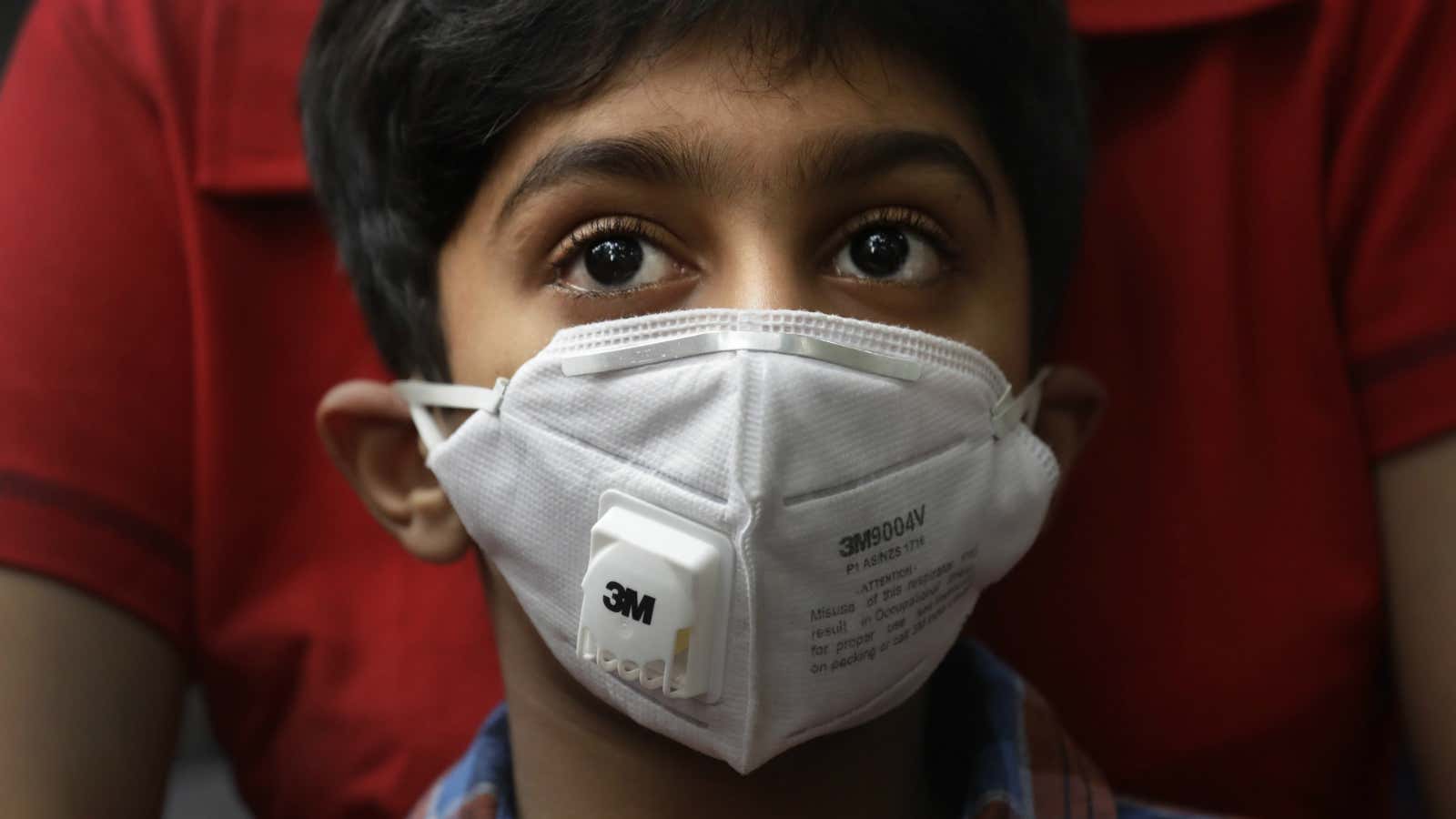Air pollution in Delhi has gotten so bad that schools have been shut and construction work halted even as citizens are forming giant queues outside shops selling face masks.
The levels of particulate matter (PM) 2.5, the tiny particles less than 2.5 micrometers in diameter that pose a serious health hazard, are off the charts, literally. Although the air quality index (AQI) typically measures the amount of PM2.5 in the air on a scale between 0 and 500 (hazardous), their levels have reached nearly 1,000 in New Delhi lately. Little wonder then that the World Health Organisation ranks India’s capital among the world’s most polluted cities.
But just how badly is the noxious air affecting your body?
That is difficult to answer with any amount of precision. There are a number of variables, including the intensity and period of exposure, an individual’s age and lifestyle, existing medical conditions, that could determine the effect of PM2.5. Nonetheless, there is a way to estimate the impact: microlives.
Here’s a straightforward explanation by Adam Pasick and David Yanofsky from an earlier Quartz piece:
What is microlife: It is equal to about 30 minutes of your remaining lifespan, so you spend 48 of them per day as a baseline. (A 22-year-old man or 26-year-old woman has about a million microlives, or 57 years, left to live.) Healthy behavior like exercising adds microlives and unhealthy behaviour—say, breathing polluted air—subtracts it. The sum total will dictate how long you are likely to live.
How to use the calculator: First, find your city’s PM2.5 level. There are a variety of websites and data sources. AQICN is a good place to start, especially for cities in Asia.
Once you have the PM2.5 number—because the particles are microscopic, you may get a surprisingly high read-out, even on a fairly clear day—enter it into the calculator to find out how many microlives your city’s air pollution is costing you.
What does it all mean? The average pollution levels in Beijing suggest living there will use up about 2 to 3 microlives per day, while levels in New Delhi, one of the world’s most polluted cities, use up an estimated 4-5 microlives, according to calculations by Roberts and Riesland.
You can compare the score to everyday activities that can help or hurt your life expectancy:
- Smoking six cigarettes = 3 microlives/day
- Being 5 kg (11 lbs) overweight = 1 microlife/day
- Two hours of sedentary behavior = 2 microlives/day
- Drinking alcohol = 1 microlife for each drink after the first
- Eating one serving of red meat = 1 microlife
There are also many healthy behaviours that can give us extra microlives:
- Drinking 2-3 cups of coffee = 1 microlife/day
- 20 minutes of exercise = 2 microlives/day
- Each subsequent 40 minutes of exercise = 1 microlife/day
- Drinking one (but only one) alcoholic beverage = 1 microlife/day
The fineprint: All the above calculations are based on some basic assumptions. Most notably, calculating how many microlives a given PM2.5 level will cost you on a given day assumes that you are living your entire life at that level. There simply isn’t enough data on human health and pollution to accurately predict the effect of spending a single day breathing dirty air.
